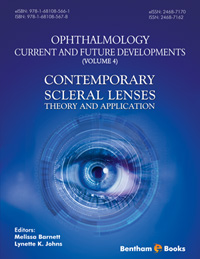Abstract
As technological advances in scleral lenses have improved the comfort and function of these lenses for patients, there has been increasing acceptance and use of scleral lenses by ophthalmologists. Historically, scleral lenses were most frequently used for visual rehabilitation of patients with corneal ectasias such as keratoconus, pellucid marginal degeneration and keratoglobus. Scleral lenses are also indicated for other patients with high or irregular astigmatism such as in post-keratoplasty patients or after complications of LASIK vision correction. Increasingly, scleral lenses are used in patients with severe ocular surface disease such as Stevens-Johnson syndrome (SJS), graft versus host disease (GvHD), and ocular cicatricial pemphigoid. Few ophthalmologists have expertise in fitting contact lenses, much less specialty lenses including scleral lenses. When patients are referred for scleral lenses by a comprehensive ophthalmologist, or more often, a corneal specialist, the patient is best served if the fitting practitioner understands the purpose of the referral. Scleral lenses have altered how corneal specialists manage patients with a variety of diseases. They have helped to decrease the progression to corneal transplantation in patients with corneal ectasia and irregular astigmatism. Scleral lenses have also helped to improve the quality of life for patients with severe ocular surface diseases. It is important for all eye care providers to be aware of the utility of these lenses for even the most complex eyes.
Keywords: Astigmatism, Collaborative, Complex, Conjunctiva, Consultation, Edema, Graft, Graft vs. host disease (GvHD), Intra-ocular lenses, Keratoconus, Oncology, Ophthalmologist, Patient, Pellucid marginal degeneration, Quality of life, Referral, Scleral lens, Suture, Symptoms, Tumor.






















